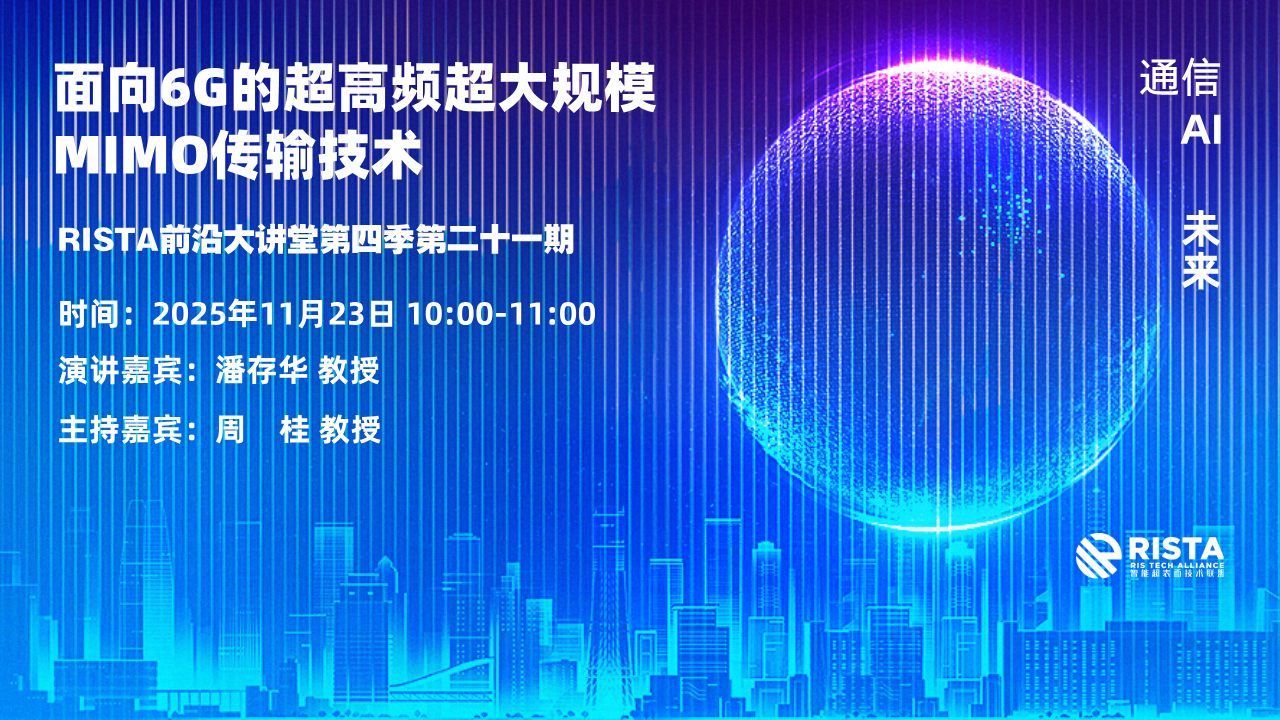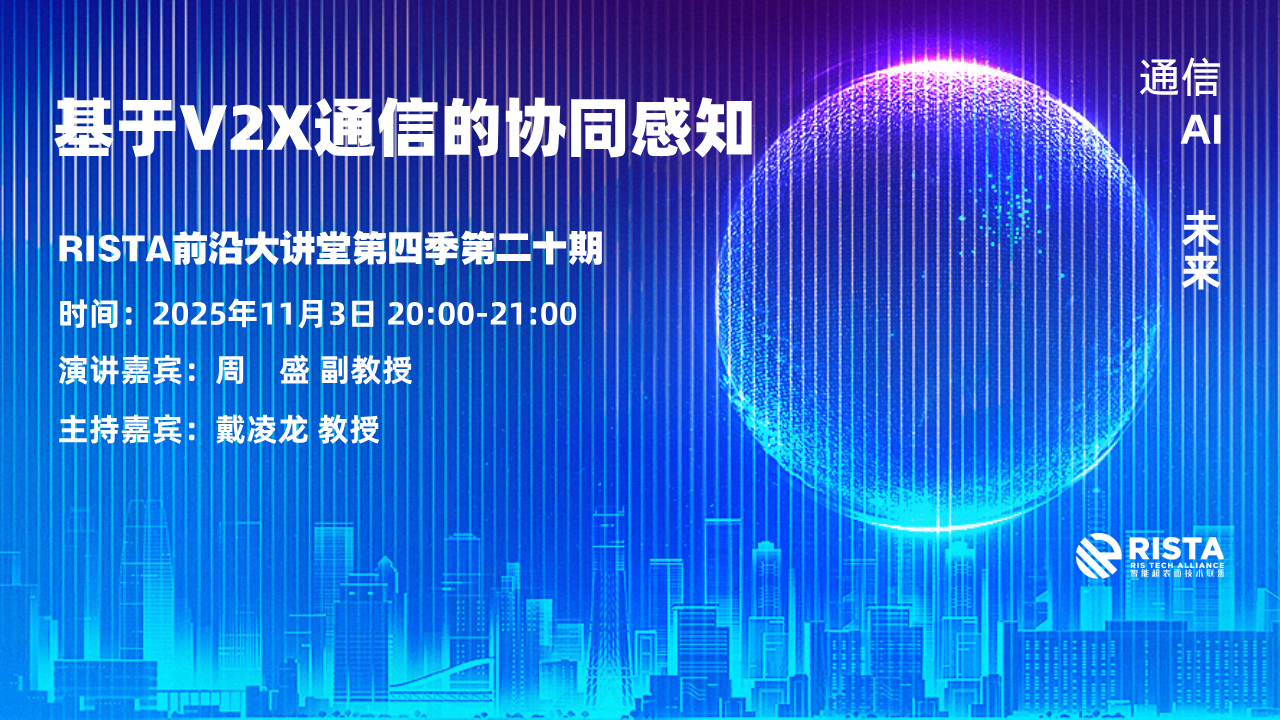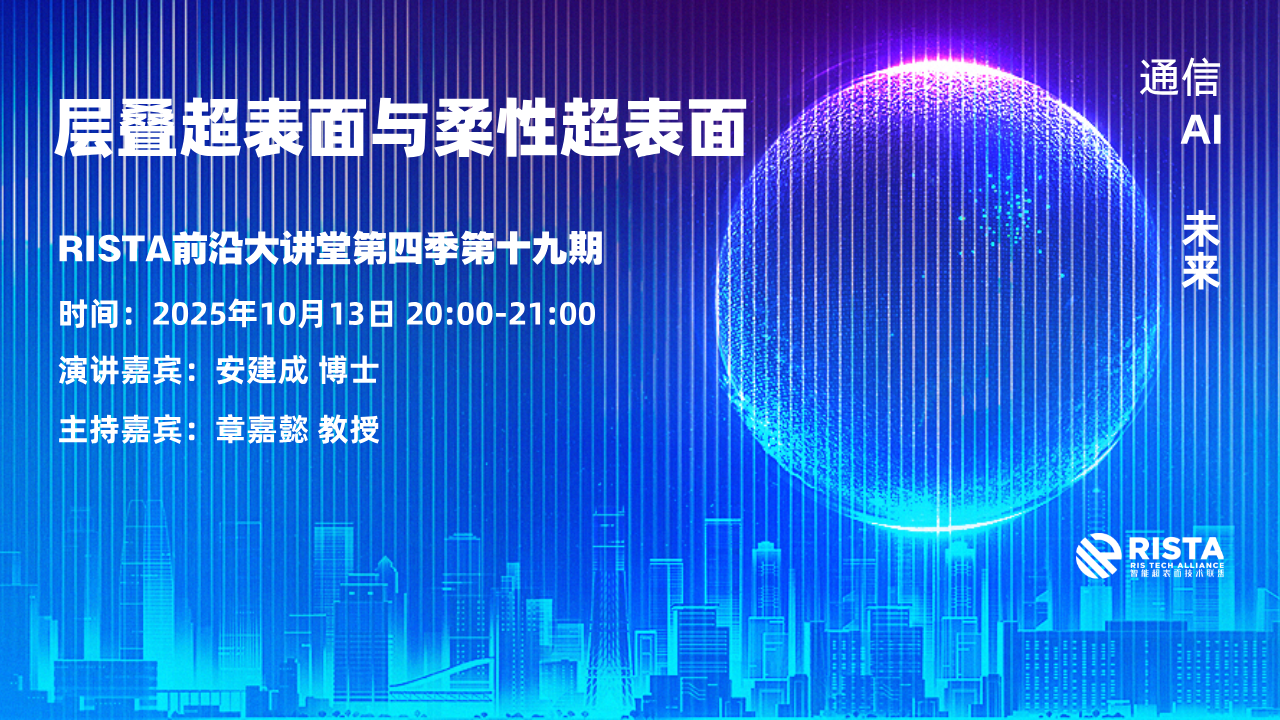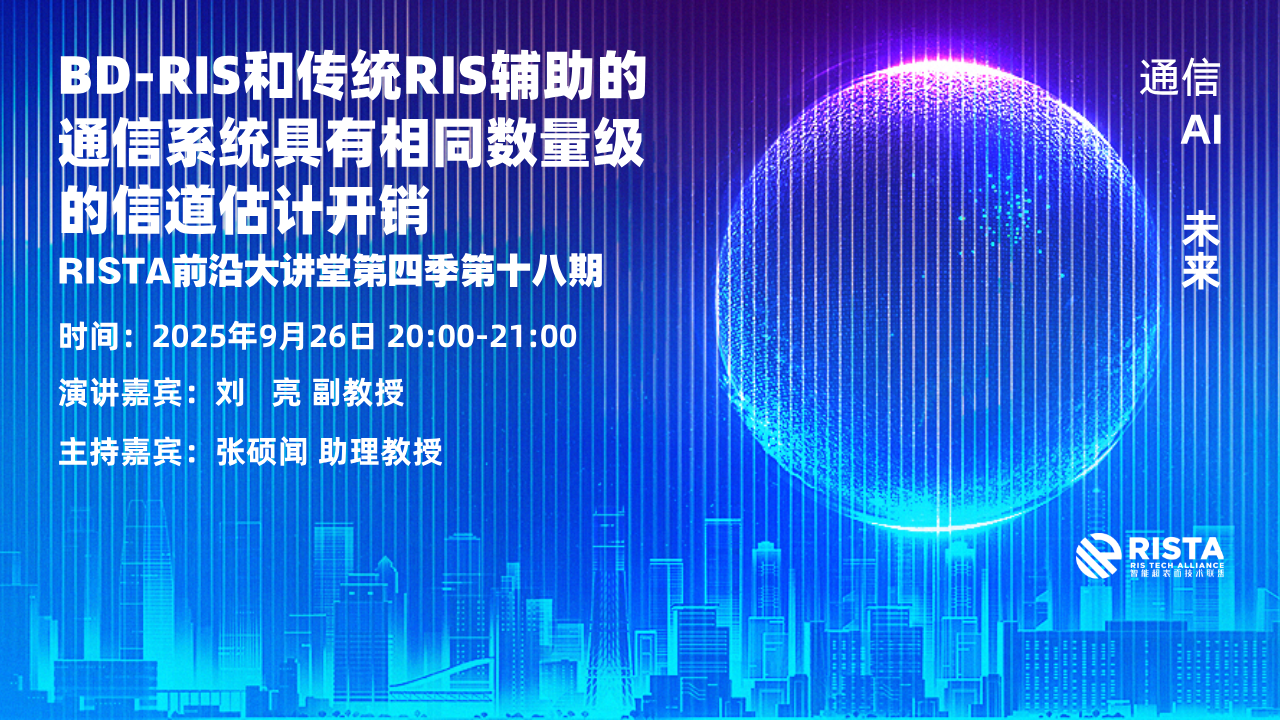本文转自公众号“THU宽带通信与信号处理”文章《【预告】IEEE GLOBECOM 2023 Tutorial — 6G智能超表面技术:从学术研究到产业发展》
公众号:THU宽带通信与信号处理【预告】IEEE GLOBECOM 2023 Tutorial — 6G智能超表面技术:从学术研究到产业发展

Reconfigurable Intelligent Surfaces for 6G:
From Academic Research to Industry Development


摘要
6G Reconfigurable intelligent surface (RIS) has become a promising technology for future 6G wireless communications. RISs have recently attracted extensive research interests to enhance the wireless communications through enlarging signal coverage, improving channel capacity, and increasing energy efficiency. However, practical applications of RISs still face challenges. This tutorial will introduce the latest progress of RIS from perspectives of both academic research and industry development. First, this tutorial will introduce the advanced algorithms for RIS. By considering the physical characteristics of RIS channels including near-field propagation, spatial non-stationarity, ultra-wide broadband effect, etc., we will present the corresponding advanced algorithm designs for RIS channel estimation, beamforming, and beam training. Then, this tutorial will discuss the architecture designs for RIS. Facing the challenges including the multiplicative fading effect and excessive pilot overhead for channel state information acquisition, some new architecture designs of RIS, such as active RIS, sensing RIS, and time-phase adjustable RIS, will be discussed from the viewpoint of joint hardware and software optimization. Subsequently, this tutorial will present the recent system-level simulations of RIS, and the trial test results of RIS in commercial 5G networks. The multi-stage standardization of RIS will also be discussed. Finally, we will review the predecessor technologies of RIS in 4G and 5G (relay and full-dimensional MIMO) to predict the development trends of RIS in the future.
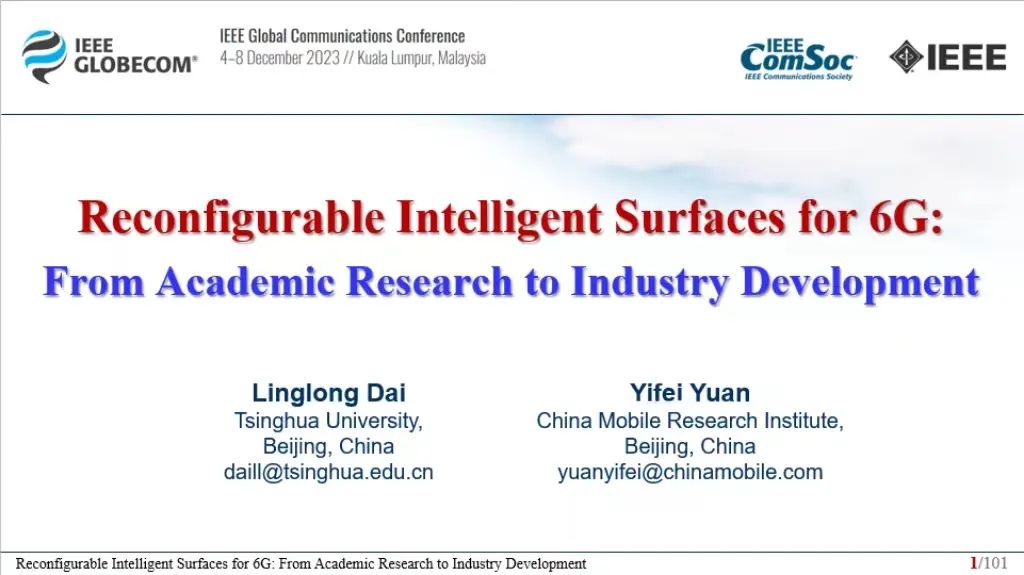
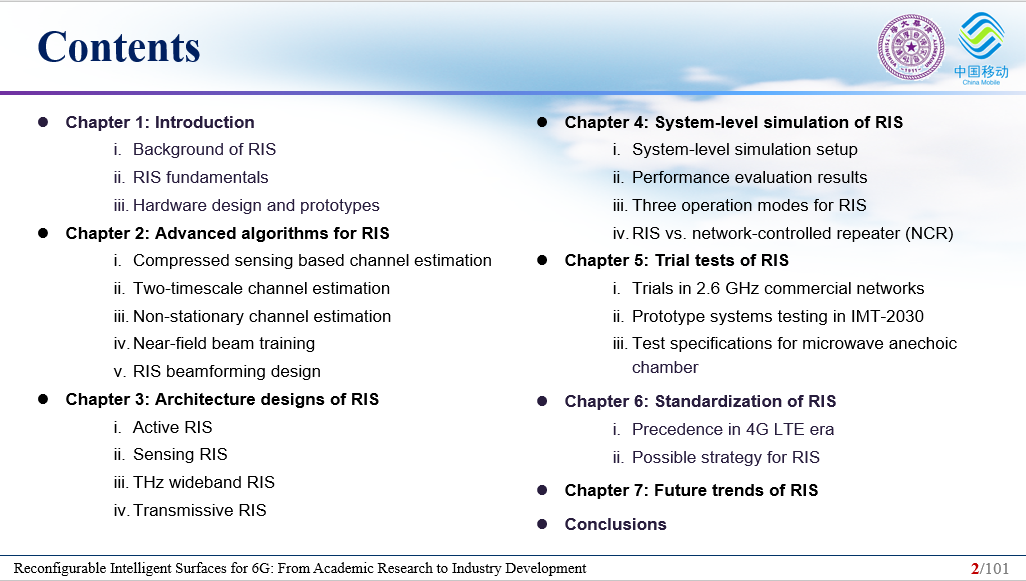

报告人信息
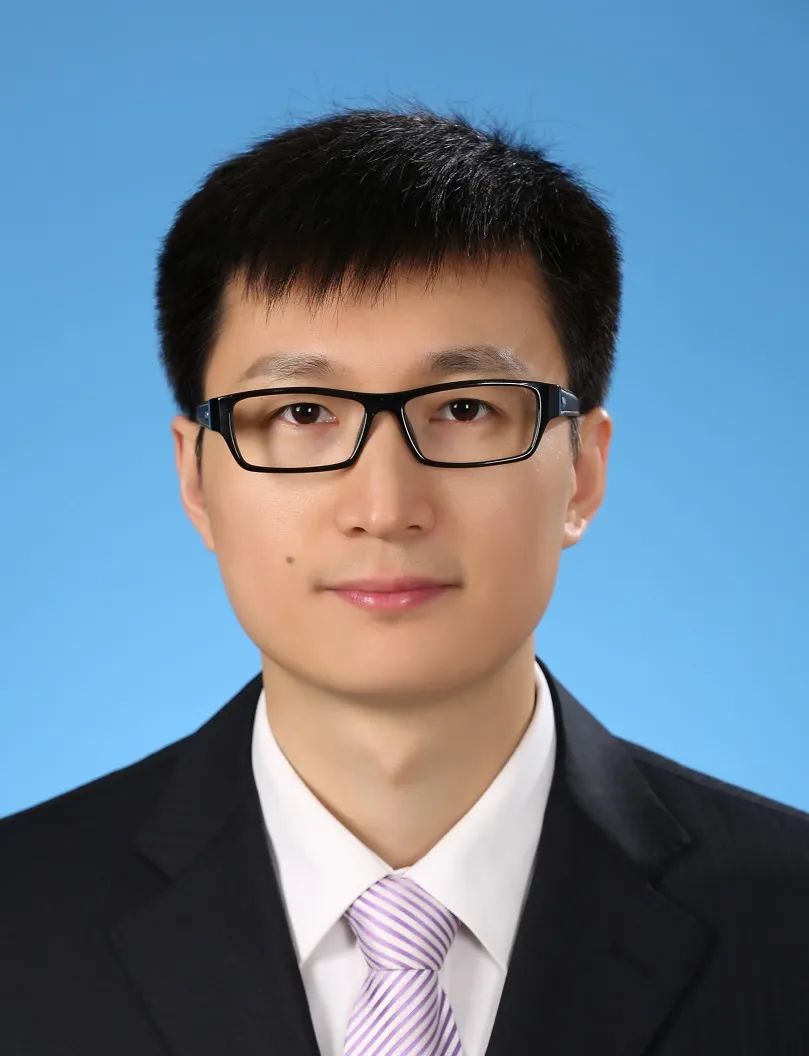
Linglong Dai (Fellow, IEEE) received the B.S. degree from Zhejiang University, Hangzhou, China, in 2003, the M.S. degree (with the highest honor) from the China Academy of Telecommunications Technology, Beijing, China, in 2006, and the Ph.D. degree (with the highest honor) from Tsinghua University, Beijing, China, in 2011. From 2011 to 2013, he was a Postdoctoral Research Fellow with the Department of Electronic Engineering, Tsinghua University, where he was an Assistant Professor from 2013 to 2016, an Associate Professor from 2016 to 2022, and has been a Professor since 2022. His current research interests include massive MIMO, reconfigurable intelligent surface (RIS), millimeter-wave and Terahertz communications, near-field communications, machine learning for wireless communications, and electromagnetic information theory.
He has coauthored the book “MmWave Massive MIMO: A Paradigm for 5G” (Academic Press, 2016). He has authored or coauthored over 90 IEEE journal papers and over 50 IEEE conference papers. He also holds over 20 granted patents. He has received five IEEE Best Paper Awards at the IEEE ICC 2013, the IEEE ICC 2014, the IEEE ICC 2017, the IEEE VTC 2017-Fall, and the IEEE ICC 2018. He has also received the Tsinghua University Outstanding Ph.D. Graduate Award in 2011, the Beijing Excellent Doctoral Dissertation Award in 2012, the China National Excellent Doctoral Dissertation Nomination Award in 2013, the URSI Young Scientist Award in 2014, the IEEE Transactions on Broadcasting Best Paper Award in 2015, the Electronics Letters Best Paper Award in 2016, the National Natural Science Foundation of China for Outstanding Young Scholars in 2017, the IEEE ComSoc Asia-Pacific Outstanding Young Researcher Award in 2017, the IEEE ComSoc Asia-Pacific Outstanding Paper Award in 2018, the China Communications Best Paper Award in 2019, the IEEE Access Best Multimedia Award in 2020, the IEEE Communications Society Leonard G. Abraham Prize in 2020, the IEEE ComSoc Stephen O. Rice Prize in 2022, the IEEE ICC Outstanding Demo Award in 2022, and the National Science Foundation for Distinguished Young Scholars in 2023. He was listed as a Highly Cited Researcher by Clarivate Analytics from 2020 to 2022. He was elevated as an IEEE Fellow in 2021.
Particularly, he is dedicated to reproducible research and has made a large amount of simulation code publicly available.

Yifei Yuan (Fellow, IEEE) received his Bachelor & Master degrees from Tsinghua University of China, and a Ph.D. from Carnegie Mellon University, USA. He was with Alcatel-Lucent from 2000 to 2008, working on 3G/4G key technologies. From 2008 to 2020, he was with ZTE as technical director and chief engineer responsible for standards research on LTE-Advanced and 5G. Since 2020, he has been with China Mobile Research Institute, responsible for advanced technologies of 6G. His research interests include MIMO, channel coding, non-orthogonal multiple access (NOMA), internet-of-things (IoT), resource scheduling. He has extensive publications, including 6 books on LTE-Advanced and 5G. He is the rapporteur of NOMA study item in 3GPP. He is the recipient of Best Paper Award by IEEE Communications Society Asia-Pacific Board for co-authoring a paper on NOMA in IEEE Communications Magazine.

主要参考文献
[1] Z. Zhang, L. Dai, X. Chen, C. Liu, F. Yang, R. Schober, and H. V. Poor, “Active RIS vs. passive RIS: Which will prevail in 6G?,”IEEE Trans. Commun., vol. 71, no. 3, pp. 1707-1725, Mar. 2023.
[2] J. Zhu, K. Liu, Z. Wan, L. Dai, T. J. Cui, and H. V. Poor, “Sensing RISs: Enabling dimension-independent CSI acquisition for beamforming,” IEEE Trans. Inf. Theory, vol. 69, no. 6, pp. 3795-3813, Jun. 2023.
[3] C. Hu, L. Dai, S. Han, and X. Wang, “Two-timescale channel estimation for reconfigurable intelligent surface aided wireless communications,” IEEE Trans. Commun., vol. 69, no. 11, pp. 7736-7747, Nov. 2021.
[4] Y. Yuan, D. Wu, Y. Huang, and C. -L. I, “Reconfigurable intelligent surface relay: Lessons of the past and strategies for its success,” IEEE Commun. Mag., vol. 60, no. 12, pp. 117-123, Dec. 2022.
[5] Q. Gu, D. Wu, X. Su, H. Wang, J. Cui, and Y. Yuan, “System-level simulation of reconfigurable intelligent surface assisted wireless communications system,” in Proc. IEEE Global Communications Conference (IEEE GLOBECOM’22), Dec. 2022.
[6] R. Liu, Q. Wu, M. Di Renzo, and Y. Yuan, “A path to smart radio environments: An industrial viewpoint on reconfigurable intelligent surfaces,” IEEE Wireless Commun., vol. 29, no. 1, pp. 202-208, Feb. 2022.

